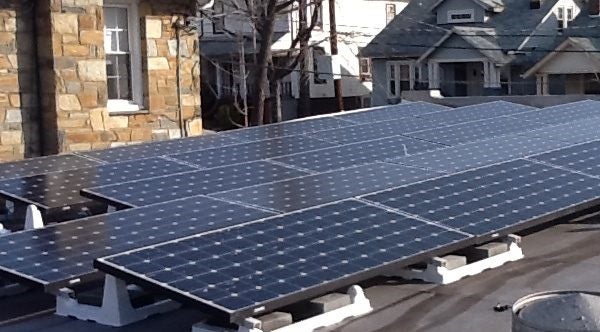Selling a solar home: What you need to know

A solar system can add complexity to the home selling process, but it can also be an asset when selling your home. There are several steps you can take as a solar homeowner to ensure your system is a net-benefit to your sale. Many realtors report that solar makes your home “stand-out” to potential buyers. In addition, a number of studies show that adding solar to your home can significantly increase the value of your home, but the devil is in the details.
The most important piece to understand is the ownership structure of your system. If you have purchased your solar system, it can convey with sale of your home. Selling your home with a leased solar system can cause complications when the house transfers ownership. The new owner must agree to take on the lease of the solar system.
The solar leasing company may not allow the transfer to occur if the potential homebuyer’s credit score is poor. This has led to potential buyers being scared away by the lease agreements and lose interest in the home. Additionally, if the new owner decides not to take on the lease, the previous owner would have to pay off the lease.
Most solar lease agreements do not come with penalties for paying the entirety of the lease off early. If the system is not transferred, the system would have to be removed. The cost of removing a leased solar system varies by leasing company agreements, but it is usually somewhere between $500 and $1,000 dollars. Leasing company fees and the how far the lessee is into the lease can result in drastically higher charges. It is important to understand the terms of the transfer before agreeing to lease solar panels.
Communication between the real estate agent and the homeowner is key to marketing a solar home. Many buyers are unaware of the benefits or do not have much knowledge about solar powered systems. This gives the seller an advantage in the housing market.
As you begin the process of selling a solar home, it is important to be knowledgeable about your system. It’s warranties, production, quality, conveying value, and the value of it’s future energy generation can be selling points to potential buyers, but this information must be accurately and comprehensibly explained. You should make your system’s manual and your installer and manufacturers warranties available to the party that purchases your home.
A 2015 study conducted by the Berkeley Lab Group found that solar does increase the value of a home. The study encompassed 22,000 home sales. On average, the systems were priced at $15,000 dollars. This has become known as a solar premium, where potential buyers see solar panels as an upgrade to a house. Solar panels not only have proven to increase prices, but have also caused solar homes to sell more quickly than ones without. Marketing green energy both gives you an advantage in the housing market and increases the resale value as buyers are increasingly seeking out energy efficient homes. Solar panels save money on the house in the long run, as SRECs can be incorporated into the home sale through a transfer agreement with the new owner.
The value of a solar system varies from system to system. There are services such as Savenia and the PV Value Tool, which allow homeowners to sell and promote solar houses and display it to prospective buyers in a straightforward manner. These services may lead to faster sales due to the rapidly growing market for energy saving homes. Savenia, a third-party group dedicated to providing solar ratings for homeowners and installers, has two options to estimate the value of the solar system.
The first option, the free system calculator, is a very general assessment of one’s system over a 15-year period and the range of the added value the system brings to a home. The second option, a solar rating, gives an in-depth analysis of one’s home over the course of 25 years and uses operating costs, system returns, and other metrics. to calculate the rating. Ratings consist of gold, silver, bronze, and green, where each corresponds to the level of returns as well as environmental value the system has. This service costs $275. The PV Value Tool, sponsored by the Department of Energy, gives a homeowner an energy production value for his or her system. The value of the system is based on projections such as maintenance fees and likely energy production. This is a useful tool for homeowners to be able to explain to potential buyers how much energy they will produce and save over the life of the system. It also determines whether the system is of high, medium, or low value
As solar continues its rapid growth, more real estate agents and homebuyers will have a good understanding of the benefits of solar. As a solar homeowner, you have the opportunity to help them by being knowledgeable about your system.
